SUICIDE KITS

There have been a number of suicide kits created and sold online over the years, many of which have gotten their fair share of coverage and controversy. Much of that seems to stem from the discomfort people feel about the act of suicide itself. Suicide kits have been around for a few decades now and they aren’t going away any time soon. People are also finding new methods of suicide to share with others online or in specific groups.
Communities supporting these products have been growing and speaking out on the right to die. Whilst those who believe it to be inhumane campaign for these kits to be made illegal. Whenever suicide kits have garnered media attention it has been after police found the kit next to the deceased person. These sensitive stories have then been broken by the media, which have sensationalised them to some extent. The media coverage creates a Streisand effect in regards to the products. News stories will advise and warn people against the kits, there will be bans, information regarding the products will be censored in an attempt to hide it from others but unfortunately when that happens, it boosts the sales of kits more as people go out of their way to obtain further information. Why do people feel so angry about these kits? Many individuals are taking their lives via other means without the use of bought kits.
Is it the fact that some individuals are paying people who then directly profit from their death?
A group of people that were vocally outraged were the family of 29 year old Nick Klonoski. Son of a U.S. district court judge Ann Aiken, Nick’s lifeless body was discovered in his home by his brother Jake in December 2011 after he had purchased and used a suicide kit. His head was covered in a clear plastic hood which closed at the neck, it connected to a plastic tube hooked up to an orange metal helium tank. Next to Nick’s body, Jake noticed a white box decorated with a butterfly in which the plastic hood and tube arrived. Included in the online order was also a book titled Final Exit.
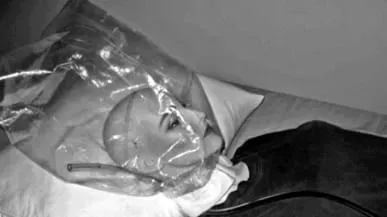
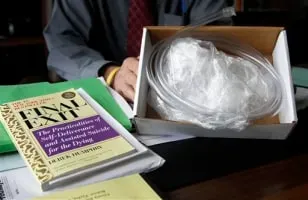
Four months after Nick’s death, the FBI raided the home of an elderly woman that was selling do it yourself asphyxiation kits. Sharlotte Hydorn had been selling what she describes as ‘exit kits’ that come with a helium tank and hood. Helium, in its pure form is lethal. The kit is designed to be a simple suffocation device that uses the helium to take away life. Sharlotte had been selling the kits for four years before Nick decided to make an order online. The 91-year-old has been selling the $60 (£36) kits under the brand name GLADD – Glorious Life and Dignified Death. The raid on her home lasted around ten hours. The FBI ransacked Sharlotte’s home, packing up various boxes of items including some of the equipment used to make the kits.
Sharlotte received a lot of backlash online and through media after Nick’s suicide shed light on her business, which was running for four years at the time. She insists that the kits are made for those who are terminally ill and in severe chronic pain however, Nick’s family argue that he was neither ill or in any physical pain. The case called into question how legal, if legal at all, shipping suicide kits were. Shortly after the incident, selling suicide kits in any form became a class c felony in the state of Oregon, where Nick resided at the time. Although assisted suicide is legal in the state, it was established that Nick would not have qualified under the Death with Dignity Act when he was alive. Sharlotte was not formally charged in Nick’s suicide or the selling of her product at the time. In an interview, Sharlotte recalls the judge telling her “So long as I’m not present when death occurs, and I’m not telling them to shut up and pull the bag down already, I am not accountable.”
Sharlotte did however plead guilty to tax fraud after admitting to paying no tax on $66,717 (£42,775) of income in 2010. In a plea deal, she agreed to pay $26,000 in outstanding tax.
This verdict angered many people including the family of Nick Klonoski, however Nick was an adult who was able to surf the net and find this item online. Upon ordering it to his residence he then made the decision to use it on himself, is anyone truly at fault? Had this kit not been available would Nick have found another way? We don’t know for sure.
Exit International was founded by Australian doctor Philip Nitschke. It is a pro euthanasia group which campaigns the right to die as you wish. Philip spearheaded this campaign in Australia and managed to successfully have a euthanasia law pass in Australia’s northern Territory. He was the first doctor in the world to administer a legal, lethal injection to someone. He assisted four people in their deaths before the law was shortly overturned. Philip has had his medical licence suspended in Australia as the medical board felt he posed a ‘serious risk’ to the public. This was following allegations that he had counselled one of his patients who was depressed but healthy, to take his own life. The former physician burnt his medical certificate in 2015 and he has gone even harder in his campaign since. Philip has been dubbed ‘dr death’ by the media due to his vocal support for euthanasia. He has also amassed global media attention for his various inventions designed to take your own life.

In December 2008 Philip shared details of a device he called the euthanasia machine. He had assembled the device using everyday ordinary household products including a barbecue gas bottle filled with nitrogen which you can obtain from a hardware store. The device could be made by anyone that wanted to, which was the purpose. Once ready for use, the process would cause the person to become unconscious almost instantly and then within minutes, death. This machine was condemned by Lifeline Australia but the former doctor believes he is giving people control back over their lives.
In 2012 Phil decided to start a beer brewing company. He enjoyed the odd beer like any other Aussie but that wasn’t his motivation for starting the company. Mad Dog Brewing was mainly a front for importing nitrogen gas canisters. The canisters can still technically be used for brewing for those who wish to do so. Or buyers could use the nitrogen canister to end their own lives. Nitrogen gas causes death via the process of nitrogen asphyxiation as it is odourless, colourless and tasteles.. The gas is completely undetectable to the human senses so people are not likely to feel any pain or discomfort when dying. Each Mad Dog Brewing canister is adorned with a logo of a friendly doggo and the company name. Inhalation of nitrogen leads to almost instant death, the gas is also undetectable in most autopsies.
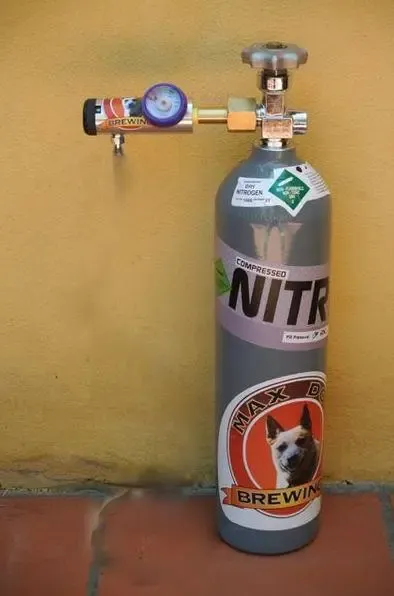
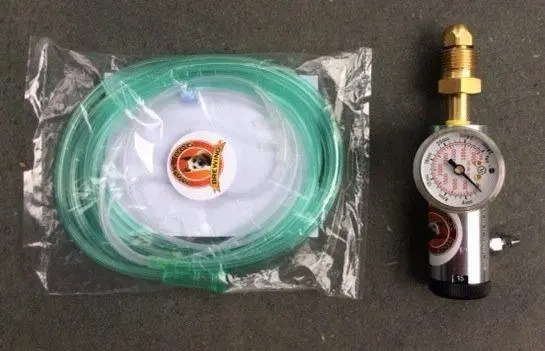
In 2014, Valerie Seegar, 75 and Claire Parsons, 66 were living together as housemates in Melbourne, Australia. The two women had known each other for 24 years, both quite accomplished in their careers. Claire was a doctor and assisted in research at the same hospital that Valerie worked in. Valerie had been the director of nursing but had to retire early due to a heart condition. She continued to stay busy and volunteered with Claire to stay active. Then, in 2013 Valerie was diagnosed with Alzheimer’s.
This was the turning point for Valerie, she did not want to slowly waste away and become a shadow of herself. The former director wanted to die with dignity and not alone. So Valerie confided in Claire, sharing that she had decided to take her own life. She then asked Claire if she would assist her in the process. Due to the nature of Alzheimer's, Valerie feared she may thwart her own plans. In the worst case scenario, it could lead to her surviving and becoming brain dead. Claire agreed to her friend’s wishes.
Mad Dog Brewing nitrogen canisters were delivered to the women’s home. Claire assisted Valerie and then shortly after, took her own life using the gas. Claire feared prosecution and public hate for her actions. Both women had previously been members of Exit International and had also attended an event in Melbourne the organisation held. The friends mailed a letter to their local police station beforehand to alert them to their deceased bodies in the home. They also mailed a note to Philip Nitschke which he received after they had passed. Some of the note reads as follows,
‘None of our actions has been taken lightly. But neither have they been taken with sorrow or regret. For us, this has been an entirely rational decision, taken in full knowledge of contemporary research in the field and experience of working with people who have Alzheimer’s. The police are obliged to charge me with aiding and abetting a suicide and I am not prepared to undergo the harassment and disgrace of prosecution. This leaves me no choice but to join my friend at her time of death.’

Philip was under investigation for two and a half years following the double suicides however he received no charges nor was he prosecuted. The investigation ruled that Philip had no direct involvement.
In 2017 Philip invented a 3D printed suicide capsule, named Sarco. Which is indeed short for Sarcophagus. Sarco is a detachable human sized pod on a stand. Once inside the coffin-like pod, the user can end their life with just the press of one button. Inside the pod is a nitrogen canister that emits the colourless gas once the occupant has pressed the button. Sarco was officially put on display at an Amsterdam funeral show. Both Philip Nitschke and Dutch designer Alexander Bannink put a model on display with a set of virtual reality glasses, giving users the feeling of being inside the pod. The inventors hoped to make the first fully functioning pod before 2018.
Both men wanted to take it a notch further and make it completely free. They aim to release the design as an open source document for people to download. This means anyone can 3D print the machine themselves using the blueprint. The duo hope the machine can be used in Switzerland as soon as 2022. The company has allegedly commissioned a Swiss legal expert who concluded the machine did not break any laws of the country, however other legal experts in Switzerland have been vocal. One telling the BBC that their findings suggest that the pod “did not constitute a medical device”, so would not be covered by the Swiss Therapeutic Products Act.



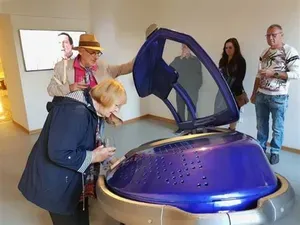
While plans for Sarco remain underway, there is currently a cheap and readily available method of suicide that is legal and under a grey area. In 2021, Former UK Health Secretary, Matt Hancock received four alerts in a period of six months. This was in relation to a strange uptick in people consuming a ‘suicide drug’ legally on sale for only £3. Reports warned of further death if no action was taken. You may not have heard of this before as it didn’t make many headlines.
The substance in question is sodium nitrite.

In June 2021, nineteen year old Katie Turnball was living with her family in Cumbria. Katie had been researching about sodium nitrite and decided to order the substance online as it was completely legal and easy to do. When the package was delivered to her home, her father was in at the time and naturally he was a little curious about what his daughter had ordered. Katie told him it was a hair product she had ordered and proceeded to take the package into her room. Unbeknownst to her family, Katie would then consume the substance that very same day. Hours later, Katie's Mum found her laying in bed and unresponsive. Assistant coroner Dr Nicholas Shaw ruled the death a suicide. Katie’s family were left reeling trying to make sense of the tragedy but they just couldn’t understand why. Everyone that knew Katie insisted she was not suicidal and there had been no indication to allude to anything of the sort. A relative said,
“It was a shock. We were angry she’d been able to buy it so easily. This should not have been able to be sold and posted like a gift. It’s disgusting.”
Sodium Nitrite is a white salt commonly used in curing meat so it is widely available and commonly used. Recently there has been a sudden rise in sodium nitrate poisonings in suicides. In Ontario Canada, there have been 28 sodium nitrate linked deaths, most of which have happened in the last two years. The US has recorded 47 cases of sodium nitrate poisonings. Online forums have also appeared within the last few years promoting the use of the substance for suicide and detailing the correct dosage. Experts believe many of these recent cases have been fuelled by online discussion.

The rising use of sodium nitrite as an option for suicide is unfortunate. It highlights a fact that society may not want to face. If a person wants to end their life they will find any means to do so. All the methods listed in this post also demonstrate that in some way. Banning the sale of an item can discourage many people from trying to obtain it; however sodium nitrite is a food preservative used on an industrial scale. The availability of the substance caused a sudden spike in its use, in a way that has not been seen before.
Amazon became a popular option for people to order sodium nitrate. This quickly received public backlash and led to lawsuits from bereaved families that were disgusted to see it was still on sale. Sodium nitrite no longer appears in search results on the site. eBay and Etsy also reacted and quickly banned the product.

Completely banning an item so heavily used in the food industry would be extremely difficult in practice. Though many are calling for the ban of its sale or stricter regulations, the substance remains available and pretty easy to still get online. Like the brother of Nick Klonoski, many all around the world believe the availability of items and substances that can be used to carry out suicide should be made illegal and banned. Concerns about vulnerable individuals being able to order suicide kits or drugs remain prevalent. Right to live advocates think it cruel and unjust that a person is able to order materials that result in their own demise. They argue that vulnerable individuals and those dealing with mental health can be influenced by online forums, groups and just the very availability of said products. It continues to be a back and forth between those for and against suicide.
Overall it remains a blurry area, there are those who blame the sellers, the inventors and even the government. Yet in the eyes of the law, all these parties remain innocent. Though tragic, those that have passed decided to make a difficult choice but a choice nonetheless. The right to die will always be a polarising topic as it questions the human experience and highlights that not everyone wants to be a part of it.
Comments ()